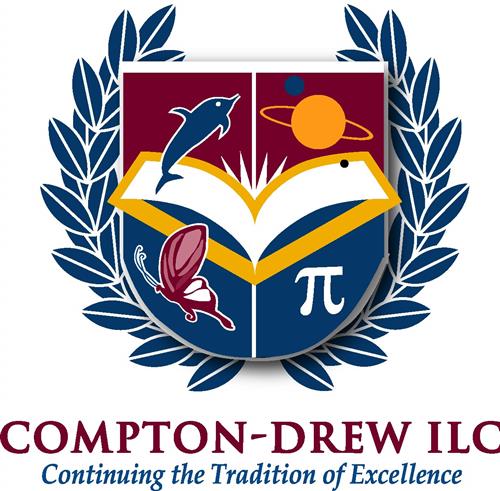- Compton-Drew ILC Middle School
- 8th Grade Fall Syllabus
Mathieson, Diana - 8th Grade Science
Page Navigation
-
 Eighth Grade Integrated Science: Room 106
Eighth Grade Integrated Science: Room 106 Teacher: Mrs. Mathieson
Email: diana.mathieson@slps.org
Telephone Number: (314) 652-9282
Eighth Grade Science
Course Description: The first quarter in science, students will investigate the relationship between Force, Motion and Fields and begin exploring Waves. During the second quarter, students continue exploring Waves and begin investigating Energy Transfers.
Text(s):
- HMH Science Dimensions Module K: Forces, Motions, and Fields
- HMH Science Dimensions Module L: Waves and Their Applications
- HMH Science Dimensions Module I: Energy and Energy Transfer
Course Objectives:
Force, Energy and Motion: Students will be able to:
- Apply Newton’s third law to design a solution to a problem involving the motion of two colliding objects.
- Construct and conduct an investigation to provide evidence that change in an object’s motion depends on the sum of the forces on the object and the mass of the object.
- Analyze and ask questions about data to determine the factors that affect the strength of electric and magnetic forces.
- Conduct an investigation and evaluate the experimental design to provide evidence that fields exist between objects exerting forces on each other even though objects are not in contact.
- Construct and interpret graphical displays of data to describe the relationships of kinetic energy to the mass of an object and the speed of an object.
- Develop a model to describe that when the arrangement of objects interacting at a distance changes, different amounts of potential energy are stored in the system.
- Construct, use and present arguments to support the claim that when the kinetic energy of an object changes, energy is transferred to or from the object. (Law of Conservation of Energy)
Waves: Students will be able to:
- Develop and use a model to describe how waves are reflected, absorbed, or transmitted through various materials.
- Use mathematical representations to describe a simple model for waves that includes how the amplitude of a wave is related to the energy in a wave.
Energy and Energy Transfer: Students will be able to:
- Apply scientific principles to design, construct, and test a device that either minimizes or maximizes thermal energy transfer.
- Plan an investigation to determine the relationships among the energy transferred, the type of matter, the mass, and the change in the average kinetic energy of the particles as measured by the temperature of the sample.
- Construct, use, and present arguments to support the claim that when the kinetic energy of an object changes, energy is transferred to or from the object.
- Develop a model that describes the changes in particle motion, temperature, and state of a pure substance when thermal energy is added or removed.
Methods of Instruction: This class will engage in multiple modes of learning to explore science concepts. As young scientist, students will engage in scientific inquiry, discussion, research, projects, presentations, labs and field experience. Students will be learning through a cooperative learning style that will employ investigative and discovery-based learning. This class emphasizes science literacy.
Assignments: The assignments consist of a daily Do Now, classwork, exit slips, homework, independent reading, and other activities. Class work is expected to be completed on a daily basis, unless otherwise stated. Guidelines must be followed when a scoring guide accompanies an assignment. Assignments will take a variety of forms including reading articles, science podcast, written responses, creating models, graphic organizers, illustrations, conducting labs, observing the world around them and then seeking to find conclusions.
Absences and Missed Assignments: In the event of an absence, it is the responsibility of the student to get all missing assignments upon returning to school and return assignments by the given due date. For long-term illnesses (2 days or more) parents are required to contact the Main Office at 314-652-9282 and arrange to pick up their child’s homework assignments.
Exams/Tests/ Quizzes: Assessments will be given throughout each term. It is important for students to come on time daily prepared to complete all assignments to the best of his or her ability. By keeping up with assignments, students will be prepared for any assessment given.
Grading Criteria: Student’s grades will be comprised of the following:
Class Work
35%
Class Participation
15%
Homework
20%
Test
15%
Projects
15%
Materials Needed Daily
Bring to class daily:
- iPad, fully charged each day with the charging cord and earbuds
- Science Module and Notebook
- Sharpened pencils
Course Requirements: The goal for academic achievement is that all students attain 80% or better in each of their classes. In order to accomplish this, students should come prepared and ready to learn, be responsible for all his/her own work, and behave with respect.
Attendance Policy: All students are expected to attend school daily and to be on time for class as outlined in the Compton-Drew Student and Parent Handbook.
Homework Policy: Homework is assigned at the beginning of the week and is due by Friday of the week. Homework will not be accepted after Friday. Students are expected to adhere to the SLPS District policy regarding homework, which is as follows:
It is the policy of the St. Louis Public Schools that the teachers regularly assign homework that enhances the educational development of students. Each family is asked to set aside approximately ninety minutes (90) each evening for academic excellence. At the middle school level, at least twenty minutes per core subject should be allotted for homework each evening.
Written Assignments and Academic Misconduct: All written work submitted must be the student’s original work and conform to the guidelines provided by the teacher. This means that any substantive ideas, phrases, sentences, and/or any published ideas must be properly referenced to avoid even the appearance of plagiarism. It is the student’s responsibility to know all relevant school policies concerning plagiarism. Any documented cases of plagiarism can and will result in a failing grade.

